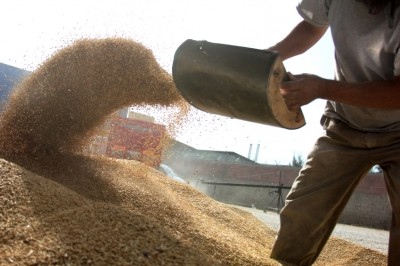Asian corn feed price pressures poultry producers
prices are now hitting poultry and other livestock producers as
they race to restock feed supplies. With corn stocks in China
hitting new lows, other feed alternatives will have to be explored
if producers are going to stay on top, writes Simon Pitman.
With corn prices at a six-year high and stocks in the all-important China market depleted due to heavy domestic demand, Asian livestock producers have been forced to search for feed alternatives. Tapioca, cassava and palm kernel have proved to be popular options for feed mills desperate to keep up with demand and maintain their margins.
As a result, trading in feed alternatives amongst the Asia Pacific nations has become fierce. Malaysia has been buying cassava from Vietnam, while Vietnam is buying up palm kernel from Malaysia. Each country is keen to avoid the cripplingly high price of Chinese corn, which a year ago was trading at $120 a ton and now is trading at well over $200 a ton.
The alternative feeds are generally less than half the price in terms of tonnage, but the problem is that they do not have the high rates of protein that corn contains. Added to that is the problem that many livestock producers are not willing to change the type of feed they are using, so the pressure looks sure to continue on both the price of corn and on stocks.
The irony is that after a bumper crop in the US corn is widely available, but on top of the high global market rate, mounting freight costs have made sourcing corn feed from there prohibitively expensive, particularly for the Asian market.
Indeed, mounting freight costs have had a considerable impact on the way that most of Asia Pacific sources its grains. China has also experienced low wheat stock levels and has had to source increasing amounts from overseas; traditionally, the US market has been the major source, but the mounting transport costs mean that Australia, which is currently benefiting from bumper crops, is now proving to be a cheaper alternative.
Many industry experts believe that the only feasible alternative is that China starts to produce more corn. However, Chinese farmers are currently switching from grain crops to those that they deem to be more profitable, such as soybean and cotton. And this is still happening despite government incentives to plant more corn crops.
Under these circumstances, the proponents of GM corn crops may well find they have a better reception in the coming years, given that such crops have a significantly higher yield rate than the unmodified versions.
Either way, undoubtedly the hardest hit will be Asian poultry producers, who are already reeling from huge losses incurred from the bird flu epidemic. Now as they begin to restock, increasing feed prices could be the final blow for a number of the weaker players.












